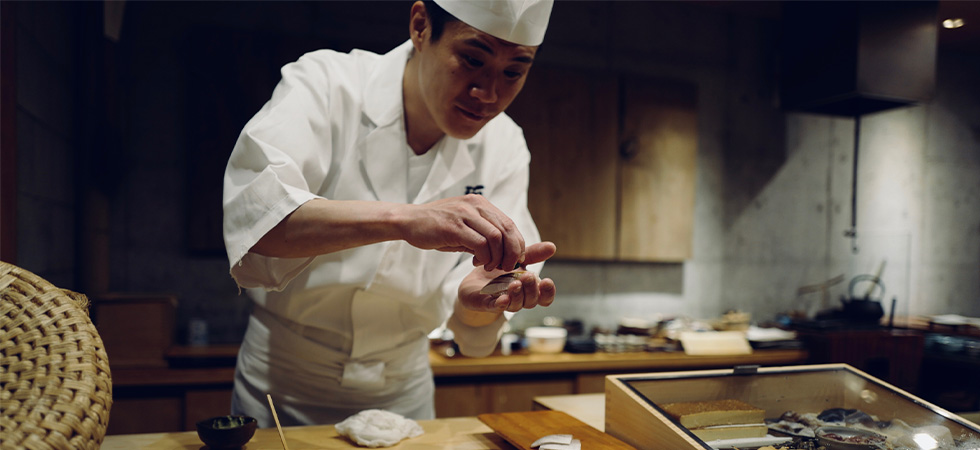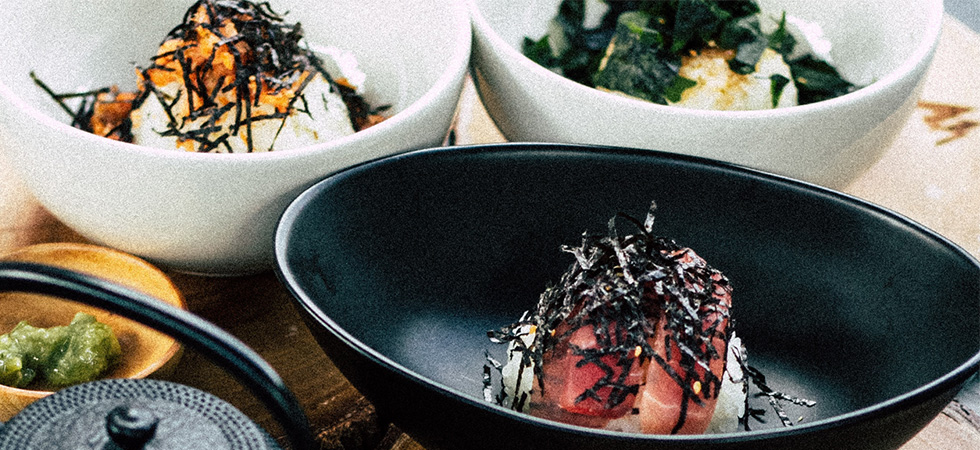A Beginner’s Guide to Japanese Cuisine
If you’re looking for an exciting cultural event, Japan offers the opportunity for you and your colleagues to experience authentic Japanese cuisine. Explore the history and evolution of one of the world’s most refined cuisines during your conference or event and discover how powerful the link between taste and memory is to enhance the effectiveness of your event. Let's take a look at the origins of traditional Japanese food, how it’s made, and what it’s like today.

A short history of Japanese cuisine
Japanese cuisine dates back more than 2000 years ago when farmers learned how to cultivate rice grain(1), likely derived from lessons from Chinese and Korean migrants who had already perfected the wet-farming technique. As Chinese influence in Japan increased, wheat and soybean crops followed, forming a holy trinity of staple ingredients.
Japan’s island geography and the influence of Buddhism created a nation of fish-eaters. Meat was both hard to come by and at various times prohibited by Japanese emperors. As a result, fish, served grilled and raw, was a feature of most meals as far back as the 9th century.
The most famous Japanese cuisine in the rest of the world, sushi was originally a method of fish preservation. Fermenting fish with boiled rice and vinegar or sake(2) helped it last as long as two weeks, the practice of which dates as far back as the 8th century. The hand rolls and nigiri sushi we see today were invented around the 18th century, and by the mid-19th century, under Emperor Meiji, Japan began to open up to the West. European influence expanded Japanese cuisine to include new ingredients and re-introduced eating meat.
2 eat-japan.com, “Sushi History”

Understanding washoku
The principles of traditional Japanese cooking, known as washoku, are recognized by UNESCO as an example of the Intangible Cultural Heritage of Humanity(3). Demonstrate the foundations of washoku in your cultural event as a way to impress and immerse your guests in an authentic experience. However, washoku is an almost sacred practice and it’s best to understand its principles before you tuck in.
Washoku uses several small dishes, accompanied by rice and pickled vegetables. Harmony is central to the philosophy of washoku: chefs use food that matches the season, also known as shun no mono, and balance flavors and colors to ensure the harmony of taste and appearance.
It’s said that the Japanese eat with their eyes and those who are unfamiliar with Japanese cuisine are often astounded by the level of thought and care that goes into every dish. Traditional Japanese food includes five colors per dish, which, according to ancient wisdom, is the magic number needed for good health and longevity.
Types of Japanese cuisine popular at cultural events
Sushi
Nigirizushi, also known as Tokyo-style, is probably the most commonly-seen traditional Japanese food in the USA and Europe and consists of a simple finger of vinegar-marinated rice topped with seasonal seafood. There are many more types of sushi, such as inarizushi, rice wrapped in a fried tofu pocket, and chirashizushi, scattered seafood and garnishes on a bed of rice. Saba (mackerel), unagi (freshwater eel), ikura (salmon eggs), anago (saltwater eel) and tako (octopus) are all popular sushi ingredients, seasoned with soy sauce and wasabi.

For a cultural event, sushi is a sophisticated and versatile catering choice. Sushi can be served buffet-style or as finger food during drinks receptions. As Tokyo is home to some of the best sushi chefs in Japan, you can find the freshest, tastiest sushi in the city. At events managed in Japan, we tend to have a live station where a sushi chef shows attendees how to make sushi. Or we manage a trial sushi-making workshop as one of the team building activities.
Okonomiyaki
Somewhere between a pancake and an omelet, okonomiyaki is a fun communal dish that’s cooked in front of you on a teppan grill. Chopped cabbage is the main filling, accompanied by extras like shrimp, pork, or squid. The crowning glory of the okonomiyaki is its toppings of mayonnaise and brown sauce, sprinkled with seaweed and dried katsuobushi tuna flakes.
Sharing a dish of okonomiyaki is a wonderful ice-breaker. Ideal for a small, intimate gathering for getting to know each other, an evening spent over okonomiyaki is sure to inspire collaboration and creativity in your guests.
Bento box
A bento box is simply a single portion meal stored in a box with separate compartments and eaten for lunch. Instead of a sandwich and a bag of chips, Japanese lunch boxes usually contain rice, some kind of meat or fish, and vegetables, prepared and presented with as much care as an evening meal. Event guests love bento boxes as they allow you to taste different types of Japanese cuisine in one meal. It is also easy for the attendees to take with them, and can be eaten even at an event hall without any tables, as the box can be placed on one’s knees, making it an convenient way to offer lunch at any kind of event. It also is the perfect option for a Luncheon meeting. Cute bento boxes are customizable to the individual. When it comes to sustainability, instead of utilizing plastic bento boxes that end up in the garbage, there is also the possibility to present the bento box as a souvenir, for beautiful reusable bento boxes are also available.

Tempura
The Portuguese brought tempura to Japan in the mid-16th century but in the 500 years since, the Japanese have perfected it. Tempura can be anything from white fish, giant shrimp, squid, or tofu to seasonal vegetables. Chefs dip the ingredients into egg and flour batter, deep-fry in piping-hot oil and finish with dipping sauce and daikon radish garnish. Tempura is usually served with rice and miso soup.

Kaiseki
At the other end of the spectrum from tempura, kaiseki is Japanese cuisine at its most refined. The modern-day, ultra-chic incarnation of washoku, kaiseki dinners consist of around 10 courses of seasonal dishes. Sashimi (fresh, raw fish), grilled fish, rice dishes, pickles, and soup are artfully presented in a feast-style layout.
Kaiseki dinners can be very expensive but are the ultimate luxury experience for when you want to impress esteemed guests.
At JCD we extend our famous Japanese hospitality to every event guest, ensuring they are as well looked after. We look forward to greeting you in Japan and sharing everything our fantastic cuisine has to offer.
Want to learn more about Japan and why it is the perfect location for your next event? Make sure to check out our Why Japan white paper: Click here to read more!
Are you thinking of implementing Japanese cuisine into your event? Contact us now for more information! Click here to contact us now!
